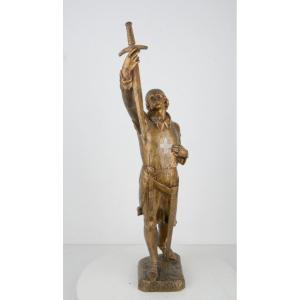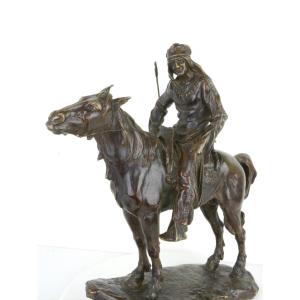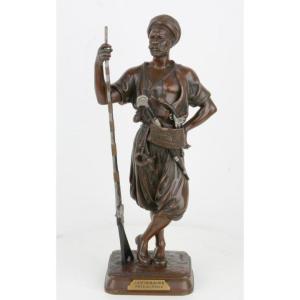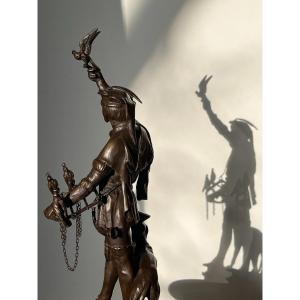Émile PICAULT endeavored to render with grace and truth the details of the Falconer's outfit, his equipment, and even the plumage of the birds of prey. This beautiful work, which the sculptor declined into three different sizes, this one being the smallest, testifies to the symbiosis between the bird of prey, the man and the dog but also to the great technical and artistic mastery of Emile PICAULT. In the second half of the 19th century, Émile PICAULT was a popular sculptor. Success smiled upon him, and inspiration did not fail him. He surfs with talent on fashionable themes of inspiration. He mixes his work with some orientalist sculptures such as his Water Carrier, his subjects of Egyptian inspiration, his Tunisian Musician... He does not disdain the time to a sculpture, a small foray into the neo-Florentine* style, as with his Escholier, his Ménestrel, his Troubadour, his Crossbowman or… his Falconer. The works of the Parisian sculptor enjoyed real publishing success during his lifetime, and throughout his career. Its reputation is also based on its collaboration with major Parisian foundries, such as the SUSSE FRÉRES house, the COLIN and HOUBEDINE foundries as well as the Société des Bronzes de Paris. As Guillaume PEIGNÉ** writes, “(…) the work of Emile Picault, an irreplaceable testimony to the artistic will of an era, shows to what extent the neo-baroque movement was impregnated with grandiloquence even in the most reduced forms of sculptural activity. » Émile Picault died at the age of 89, on August 24, 1922 in Paris 14th.
To go further: https://www.lestresorsdegamaliel.com/sculptures/503-le-fauconnier-e-picault.html
COPYRIGHT




























 Le Magazine de PROANTIC
Le Magazine de PROANTIC TRÉSORS Magazine
TRÉSORS Magazine Rivista Artiquariato
Rivista Artiquariato
